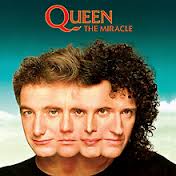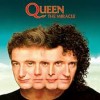 Originally published by L.S. Media. September 5th 2011.
Originally published by L.S. Media. September 5th 2011.
The Miracle was Queen’s 13th studio album and even though the band had been suffering internal turmoil with vocalist Freddie Mercury’s admission to the band that he was seriously ill and the breakdown of Brain May’s first marriage, the four members pulled out all the stops to recorded what could be considered the bands finest album of the 1980’s. It has tough competition from The Works and the group’s next album Innuendo.
The album kicks off in high tempo kick ass style with the fantastic Party and Khashoggi’s Ship, two songs that are so intertwined and apparently seamless that it’s impossible to see them as separate entities. However it’s the poignancy of the lyrics in the space between the two songs that tells all, as the first tack fades out you hear Freddie sing “The Party is all over”, instead of completely fading at that point, the listener is treated to an immediate rebuttal as the drums kick in and Freddie is screaming “Who said that my party was all over…”.
One of the most dynamic tracks on The Miracle is the rebellion like song, I Want It All. The songwas the lead song from the album and reached the heights of number three in the U.K. charts and still could be seen as rallying cry for the 21st century consumer society. If the song was a cry of anger in 1989 and the holding of a mirror to the greed and wanton destruction of society at the time then its effects are more tangible now 20 years later. Attributed to Brian May’s second wife, Anita Dobson use of the phrase “I want it all, and I want it now” the song is one of the few songs after the band stopped touring that stands out as a would be stadium classic. To have seen the band in the pomp performing it is unfortunately one of the memories of the band, fans will never see!
Perhaps one of the most underrated tracks on the album is one of Roger Taylor’s. The Invisible Man combines the imagery of Queen’s fabled lyrics and dynamic music by May and Taylor. It stands out just on pure majesty and Roger’s use of whispering lyrics during the song. This effect gives the song a spectral hidden quality that can make any fan wonder why Roger had been kept at the back for so long.
For so long the covers of the group’s albums had become staid and somewhat predictable but with The Miracle, the band pulled off one of the great pieces of artworks in music history. The cover shows all four members melding at the point of their eyes into one long face separated only by their distinctive attributes. If this was a statement on the band keeping together during the hard times that had dogged them after The Works then it succeeded.
The Miracle is unabashed and a true driving force in the bands discography, cunning, exuberant and just that little bit exciting.
Ian D. Hall
